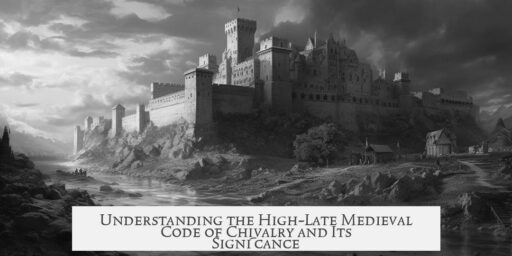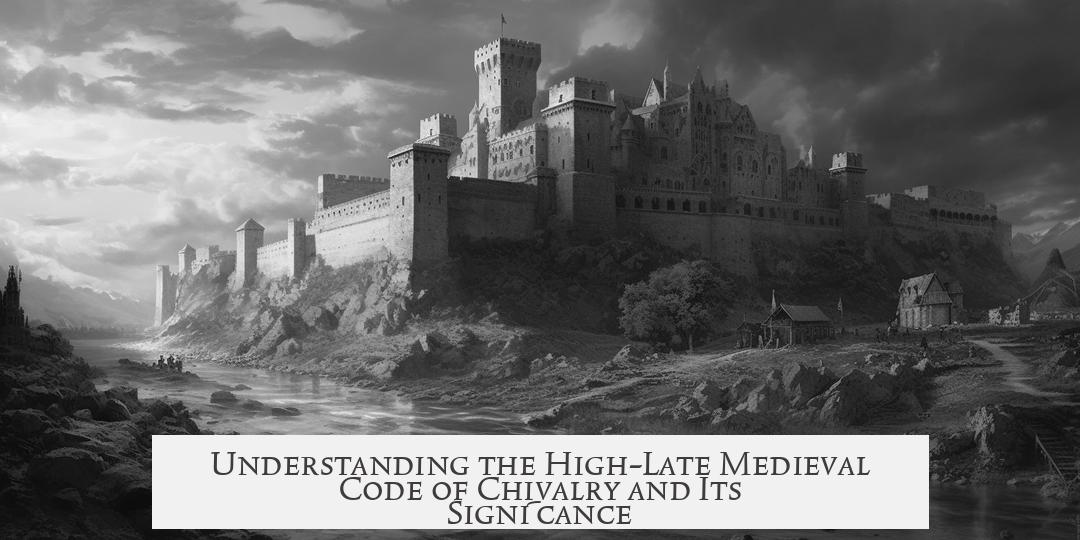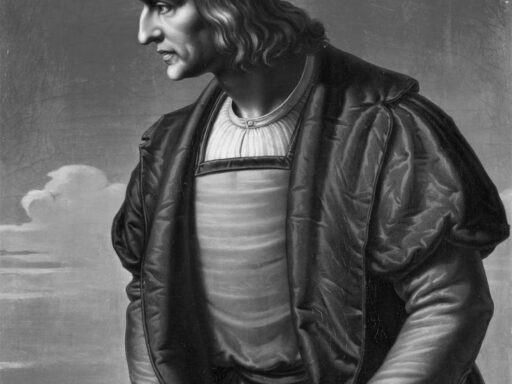The High-Late Medieval Code of Chivalry was a complex and often ambiguous code of conduct associated with knights and the aristocratic elite during the Middle Ages. It was not a straightforward set of written rules but rather a loosely defined value system and social outlook that combined ideals of martial prowess, loyalty, generosity, and courteous behavior. This code guided knights’ actions both in war and society, blending ethical ideals with practical realities.
Chivalry defies a simple definition. The term carries tonal and cultural nuances that vary by time and place. Modern scholars describe chivalry broadly as the behavioral code of medieval aristocrats, especially knights, emphasizing loyalty, courage, dedication, generosity, and courtesy. These traits formed the backbone of what contemporaries expected from an ideal knight, yet interpretations differed widely. Chivalry can be seen less as an explicit doctrine and more as a lived outlook combining ideology and social practice.
The code influenced knights’ identities and everyday conduct. Medieval chivalry embraced both martial skill and social grace. Knights were expected to excel in battle, defending their lord and lands, but also to exhibit courteous treatment to women, peers, and the less powerful.
- Martial Valor: Courage and prowess in combat remained at the heart of chivalry. Knights practiced hard fighting skills, often using edged weapons.
- Loyalty: Faithfulness to one’s lord, comrades, and cause was essential.
- Generosity: Knights were expected to be magnanimous, sharing wealth and reward with their followers.
- Courtesy: Proper behavior towards others, especially women, was stressed in the social context.
Importantly, the term “chivalry” encompassed several related ideas:
- Physical bravery and warfare: The original Latin and French terms—*militia* and *chevalerie*—highlighted knightly fighting prowess.
- The distinct social class of knights: Chivalry referred to the knightly caste itself, as a unique group within medieval society.
- Knights’ ideals and ethos: The abstract moral and social code guiding knights’ lives.
These three aspects often intertwined, especially in medieval romance literature, which offers valuable insights into how contemporaries understood chivalry. Stories and poems blended tales of warfare with ideals of honor, courtly love, and loyalty. However, these texts also reveal contradictions: chivalry sometimes encouraged both cultured behavior and brutal violence. This complexity makes chivalry elusive and difficult to reduce to a single, fixed set of rules.
Scholars caution against viewing the chivalric code as a rigid or pure ethical system. As Richard Kaeuper and others have shown, romantic portrayals of chivalry omit the frequent presence of aggressive and violent behavior accepted or even encouraged among knights. Medieval commentators themselves rarely agreed on a fixed ideal for chivalric conduct. Instead, knights navigated competing demands and ideals shaped by warfare, courtly culture, and practical social concerns.
Chivalry also shifts in meaning depending on the context. For example, notions of courtesy influenced knights’ interactions during peace times and court life, while martial valor dominated in times of war. Social expectations varied by region and over time, with late medieval chivalry incorporating elements of honor culture, religious piety, and emerging notions of gentlemanly conduct.
Understanding the High-Late Medieval Code of Chivalry requires seeing it as a broad cultural phenomenon rather than a fixed legal or moral code. It represents a dynamic set of ideals and behaviors that shaped knights’ identities and social roles while allowing considerable variation and contradictions.
| Aspect | Description |
|---|---|
| Martial Prowess | Emphasis on fighting skills and courage in battle |
| Social Class | Knightly aristocracy viewed as a distinct group |
| Ethical Ideals | Loyalty, generosity, courtesy, dedication |
| Literary Depiction | Romance literature blends idealism with violent themes |
The code functioned more as an aspirational lifestyle than a strict doctrine. Knights embodied chivalry to varying degrees depending on personal values, social pressures, and circumstances. It was less about written rules and more about cultural expectations and the performance of status.
Ultimately, chivalry served to unite martial skill with aristocratic ideals. It shaped medieval knightly identity and influenced broader medieval culture. Yet its meaning remained fluid, multifaceted, and sometimes contradictory—reflecting the complex realities of medieval warfare, society, and honor.
Key takeaways:
- Chivalry was a broad, often vague code governing knights’ conduct in war and society.
- It combined martial valor, loyalty, generosity, courtesy, and social status.
- The term covered fighting skills, knightly class identity, and knightly ideals.
- Medieval sources show chivalry as both idealistic and violent.
- Chivalry functioned more as a cultural outlook than a fixed doctrine.
What exactly was the code of chivalry in the High-Late Medieval period?
It was more an outlook or lifestyle than a fixed set of rules. Chivalry combined ideals like loyalty, courage, generosity, and courtesy, especially valued by knights and the aristocratic elite.
Did everyone in the Middle Ages understand chivalry the same way?
No. Chivalry meant different things to different people. It was seen more as a vague idea than a strict code, with its meaning changing according to individual views and social contexts.
Was chivalry just about fighting and battle skills?
While fighting prowess was one part, chivalry also referred to the knightly class as a social group and to the ideals and values guiding their behavior beyond combat.
Can we define chivalry precisely based on medieval texts?
Defining chivalry precisely is difficult. Medieval texts show mixed messages, including both ideals of courtesy and encouragement of violence, revealing no single, clear standard.
How do historians understand the term ‘chivalry’ today?
Historians see chivalry in three ways: as brave deeds in battle, as a social class of knights, and as the ideals and ethos guiding knights. These meanings often overlap in medieval literature.




